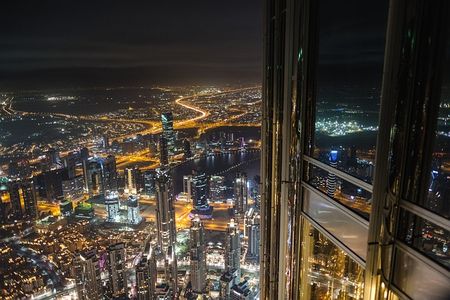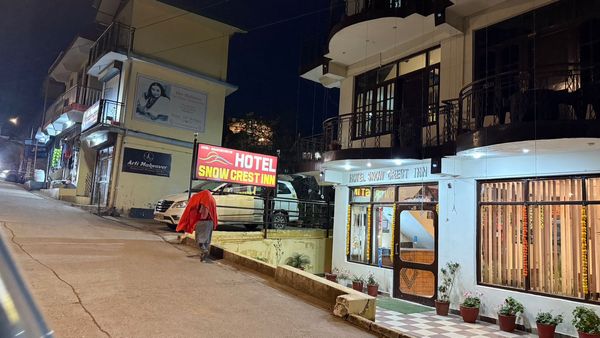Understanding Entry Requirements for Different Countries
 Rashika Singh
31 Jul, 2025
11 mins read
35
Rashika Singh
31 Jul, 2025
11 mins read
35

International travel has become more accessible than ever, yet each destination comes with its own set of entry requirements. Whether you’re going on a family vacation, a business trip, or a solo journey of self-discovery, understanding these requirements is crucial for a smooth and stress-free experience. From visa protocols and health documents to photo specifications and customs rules, being prepared ensures that your journey begins on the right foot.
Entry protocols are not just bureaucratic hurdles—they reflect a country's approach to security, tourism management, and cultural standards. For travelers, navigating these rules is part of the modern travel experience and helps foster respect for the places we visit. While some countries allow visa-free travel, others may require detailed applications, supporting documents, and biometric data.
If you're planning a visit to the UAE, for instance, getting your Dubai visa is just the beginning. Beyond approval, travelers must also be attentive to document formatting, especially when submitting photographs, identification, or proof of stay. Every detail matters—and this article explores exactly why.
Visa Requirements: More Than Just a Stamp
The concept of a visa is simple: a formal endorsement by a country allowing a traveler to enter for a specific purpose and duration. But the actual process varies widely depending on the destination. While some countries offer e-visas or visas on arrival, others require an in-depth application submitted weeks in advance.
Requirements may include:
- A valid passport with a specific period of validity
- Recent photographs meeting size and background criteria
- Travel itinerary and proof of accommodation
- Financial documents proving sufficient funds
- Return flight bookings
- Health insurance and vaccination records (especially post-COVID)
What complicates matters is that each destination tailors these expectations based on its immigration policies. Therefore, travelers must be vigilant, especially when planning multi-country trips, as rules can change and vary dramatically between borders.
Don’t miss this: Dubai visa application.
The Importance of Document Standards
Visa processing is heavily reliant on documents that must meet certain specifications. One of the most overlooked yet critical components of an application is the photo. Different countries have different photo dimensions, background color requirements, and technical standards.
Failing to meet these can result in delays, rejections, or the need to reapply entirely. This seemingly small detail holds great importance, especially in automated systems where applications are screened digitally. Governments now rely on facial recognition and biometric matching, making clarity and accuracy of photos non-negotiable.
This is particularly relevant for travelers applying to countries like the UAE, where guidelines are clearly defined and strictly enforced.
For example, Dubai And UAE Visa Photo Size Requirements 2025 | Latest Guidelines outline detailed instructions for image format, size, resolution, and even facial expression. Compliance isn’t optional—it’s mandatory for approval.
Entry Rules by Region: A Quick Overview
Europe (Schengen Zone)
The Schengen visa is perhaps the most standardized. It includes specific rules for photo size (35x45 mm), white background, and head placement. Travelers are also expected to provide biometric data and valid insurance.
United States
The U.S. requires a 2x2 inch (51x51 mm) passport photo, taken within the last six months. It must show a neutral expression, plain white background, and no head coverings unless for religious purposes. An electronic visa (ESTA) or traditional visa may be required depending on nationality.
Asia
Countries like Japan, China, and India all have unique formats for both photos and documentation. In India, for example, some consulates accept only online applications with digital photos adhering to specific pixel ratios and backgrounds.
Middle East
Each Gulf country has a slightly different entry protocol. The UAE, especially Dubai, sees millions of travelers annually, so their systems are streamlined yet particular. Following exact visa photo requirements ensures quicker approval and fewer complications upon arrival.
Health and Vaccination Requirements
Many countries now require proof of vaccinations, including those for yellow fever, polio, and COVID-19, depending on where the traveler is coming from. These health-related entry criteria are especially critical when visiting countries in Africa, South America, or Southeast Asia.
In addition, some nations may request recent negative test results for specific diseases, health declarations, or travel insurance that covers medical emergencies. All these documents should be organized and readily accessible to present at immigration checkpoints.
Customs, Declarations, and Items to Avoid
Besides visa and passport regulations, travelers should be aware of customs laws. Items such as alcohol, medications, food products, and electronics may be regulated. Failing to declare prohibited items can result in fines or confiscation.
Some countries even limit the amount of currency a person can carry in or out, requiring travelers to file financial declarations. It’s vital to read the destination country's customs guidelines before packing.
Additionally, prescription drugs that are legal in one country may be restricted in another. Carrying a doctor's prescription and checking legal status is highly recommended.
Why Following the Rules Matters
While some entry requirements may seem excessive or overly technical, they serve important purposes:
- Security: Ensuring travelers are who they say they are
- Health: Preventing disease spread across borders
- Cultural Respect: Upholding the values and customs of a nation
- Efficiency: Streamlining immigration processes in high-traffic airports
For the traveler, adhering to these rules avoids delays, denials, or missed flights. More importantly, it signals respect for the destination country—a fundamental aspect of responsible tourism.
Tech and Travel: How Digital Tools Help
Today, several government portals, apps, and embassies provide real-time updates on travel requirements. These tools help travelers upload documents, check visa status, and verify specifications like photo sizes, background color, and pixel formats. Staying digitally connected helps you avoid costly mistakes and last-minute surprises.
Additionally, biometric scanning and facial recognition are becoming more prevalent in airports. Ensuring that your submitted photo aligns with what border control will scan helps you avoid being flagged for discrepancies.
Written By:
Rashika Singh



Hotels at your convenience
Now choose your stay according to your preference. From finding a place for your dream destination or a mere weekend getaway to business accommodations or brief stay, we have got you covered. Explore hotels as per your mood.





